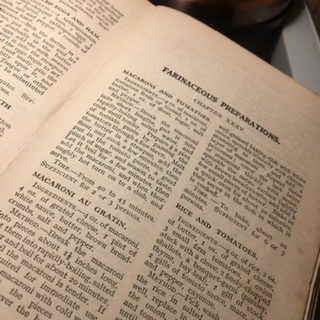Whether you call it Mac & Cheese, Macaroni Cheese or even Macaroni Parmigiana, and whether it’s a childhood favourite or latest food fad, macaroni cheese has been gracing our tables for quite some time.
You’d be forgiven if you thought its origins were in the US. It’s actually British. Via Italy, for inspiration, obviously.
The first mention of Macaroni Cheese was a recipe in 1770 in ‘The Experienced English Housekeeper’ by Elizabeth Raffald.
The assumed Italian origins of the dish can be followed back to the 13th century, where pasta was served with a fermented sauce and parmesan. Al forno dishes, more similar to our classic mac, were a mix of pasta and cheese sauce with various vegetables such as broccoli, aubergine or tomato.
“Our Anglicised name for it, Macaroni, is a corruption of the Italian Maccheroni, which comes from the Latin Macerare. The word means to bruise or crush – crushing wheat is how pasta is made.”
Eight Mighty Mac ‘n’ Cheese Facts – Radio 4
Macaroni cheese gets another mention by the oracle of household management and cookery, Mrs Beeton. By this time it’s 1923, although I can’t date the book accurately as some of the pages have fallen out. In ‘Every-day Cookery’ the entry for ‘Macaroni Cheese’ simply states: “See recipe for Macaroni au Gratin, p.547.”
So, in the 1920s, families might have been tucking into Macaroni au Gratin for their tea. Macaroni pasta layered with grated cheese and a white sauce, topped with brown bread crumbs and baked in the oven. The recipe is found under the temptingly titled Farinaceous Preparations.
Farinaceous: adjective – consisting of or containing starch.”farinaceous foods”
We see Macaroni au Gratin again in Delia’s Frugal Food (first edition 1976). This time it’s a slightly more elaborate baked pasta dish. Still with a béchamel or white sauce, but with the addition of sautéed bacon, mushrooms, onion and tomatoes.
The US history with macaroni cheese is only a decade behind ours. President Jefferson brought macaroni back from France in 1780 and it’s now the number one cheese recipe in the US.
But once they got hold of it, they deconstructed it, simplified it and eventually boxed it up to sell it back to Europe in the form of instant Mac & Cheese packs. Bright orange powdered sauce and the name shortened, perhaps working on the assumption that if we can’t be bothered to make it from scratch, we’re going to need to lose a couple of syllables from the name too.
“The one part of parenting that’s impossible to mess up”
Kraft Mac & Cheese
The 80s seemed to be all about convenience in the kitchen. A tin of Heinz Macaroni Cheese piping hot in minutes in your new Sharp’s microwave. Then the dish fell out of favour.
But now we love it again. Macaroni Cheese or Mac &/n’ Cheese…
We’ve got ready meal mac, tinned mac, packet mac, vegan mac…
And we’ve even got dirty mac pimped up and piled up with all manner of pulled meats, crunchy bits, crispy bacon bits, spicy bits…
Er, Mrs Beeton was topping hers with brown breadcrumbs 100 years ago. The only difference now is that it’ll cost you £8 and be served in a small compostable cardboard box from a Citroen Type H van (aka a hipster food truck). I’m not even making fun of this because I’m first in the queue at that van. Mac & cheese, churros, artisan coffee, dirty fries, whatever you’re selling, I’m buying.
I think Mrs Beeton’s crunchy brown breadcrumb addition was as a bit like adding Pangrattato to pasta now; a thrifty little trick if you’ve not got much parmesan, plus adds a nice crunch for a bit more interest.
My Macaroni Cheese
I’ve done mine with a classic béchamel, a teaspoon of Colman’s English mustard stirred through the sauce and strong cheddar cheese. This gets stirred over cooked pasta. I know it’s rigatoni in the photo, but they don’t do macaroni in Aldi. Once it’s finished under the grill, it’s topped with crispy smoked bacon and spring onions.
Stick a fork in me. I’m done.
32 / Write52


